Biosystems engineering is a highly integrative discipline, so the ePortfolio is a natural fit. Students are trained to be holistic problem-solvers, and the ePortfolio allows them to demonstrate that invaluable skill. In the image below, students and faculty are pictured working together to prevent the erosion of clay pads surrounding poultry houses, which can help ensure the structural integrity and longevity of the buildings. The reflective writing that accompanies the image articulates the real-world implications of the project.
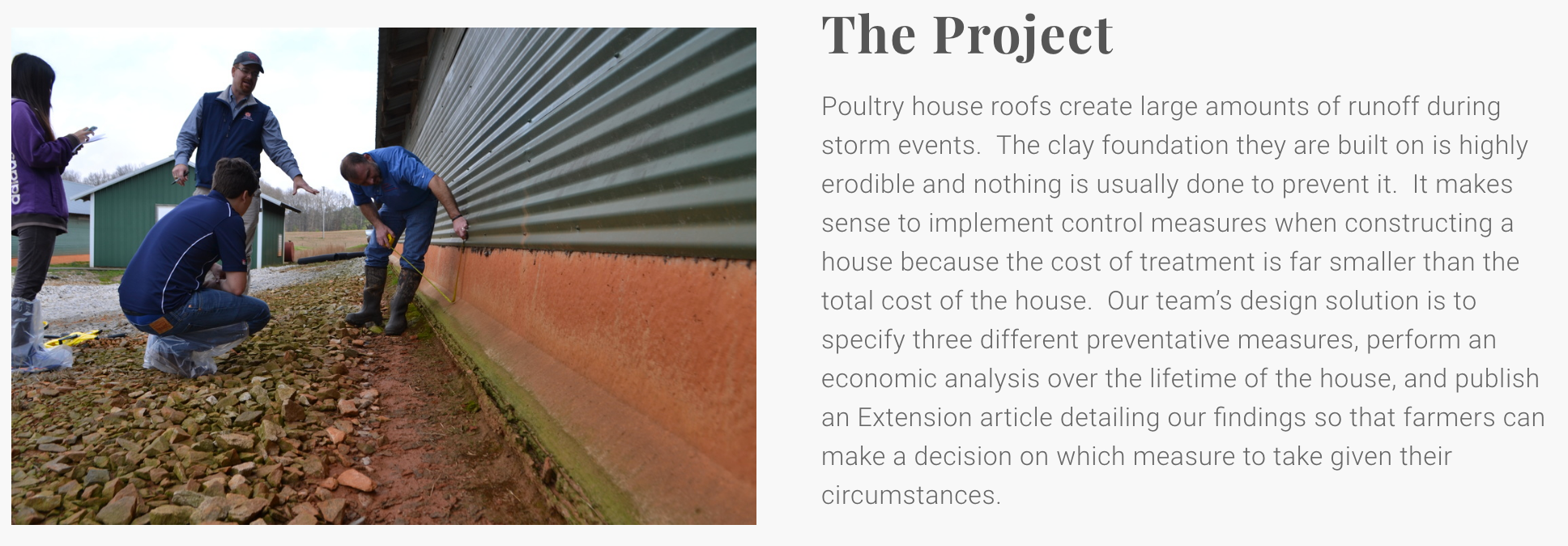
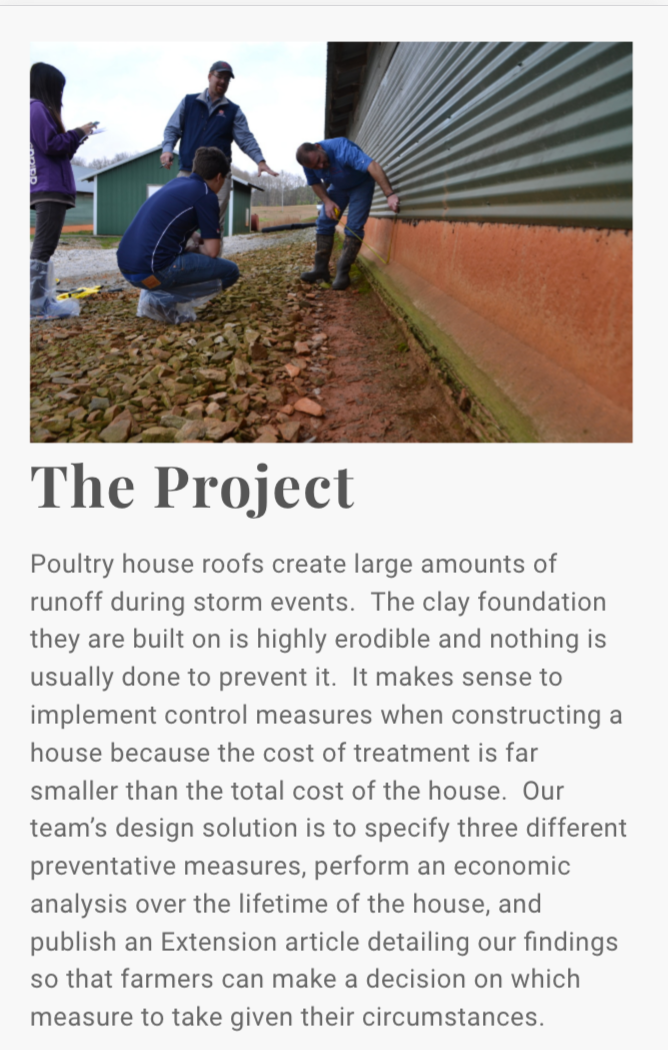
Biosystems Engineering was one of the first ePortfolio Project Cohort members. They got involved initially because their spiral curriculum already aligned with the kind of synthesis and connection across courses that the ePortfolio Project promotes. Biosystems Engineering students create individual ePortfolios starting in their sophomore year. Artifact creation and reflective practice are integrated throughout the program. Students don’t “finish” the ePortfolio per se; it’s always considered a work in progress, and students decide if and when to send their ePortfolios to potential employers or graduate schools. Every semester in the program includes a course where students have to resubmit their ePortfolio to their faculty instructor, incorporating things they’ve learned in that course. The digital, cloud-based nature of ePortfolios, which allows students to seamlessly edit and update their ePortfolios, aids this approach.
Professor Oladiran Fasina’s ePortfolio assignment from his junior-level course, Hydraulic Transport in Biological Systems, is a good example of what students are asked to do in a single course and how a single assignment can ask students to make connections not only to their other courses in the Biosystems Engineering program, but also to their activities outside of class and to their imagined futures. Also note that the assignment invites students into a kind of reflective practice—and into turning that reflective practice into communication with others—which is unusual in many disciplines, especially STEM disciplines.
Biosystems Engineering also saw the ePortfolio as an invitation for students to practice articulating, in a clear and succinct way, what a biosystems engineer is and what s/he can do. This has been extremely important for the students because many employers are not as familiar with biosystems engineering as they are with disciplines like mechanical, electrical, or civil engineering. The reflective writing in the ePortfolio gives students the opportunity to articulate the level of skill they have acquired in their Biosystems Engineering program. Because the Biosystems Engineering program has integrated the ePortfolio throughout their curriculum, students have multiple opportunities to practice telling their professional story—first to themselves and then to potential employers or graduate schools. In the example image below, one student uses her reflective writing to highlight her analytical and communication skills and to describe how she will apply those skills to her future career.
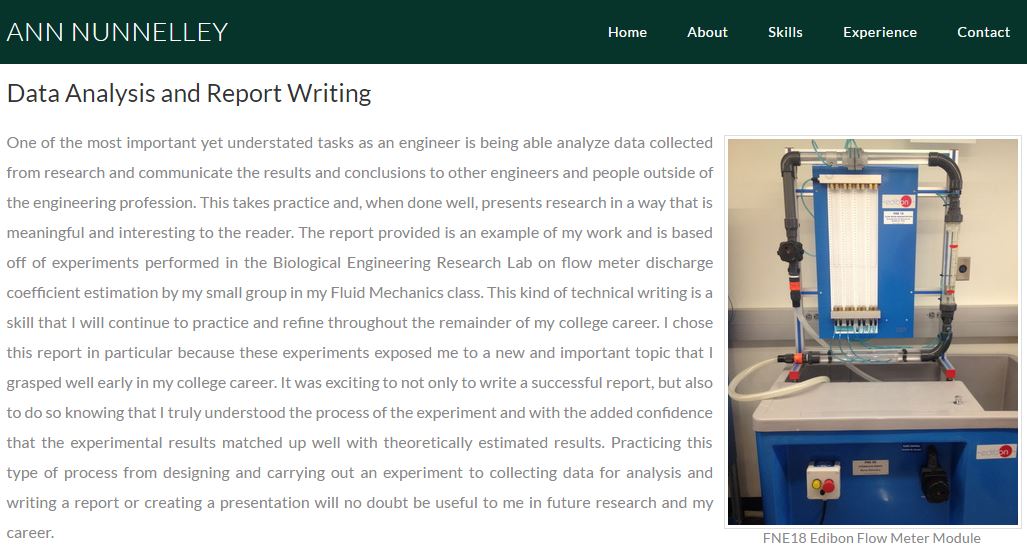
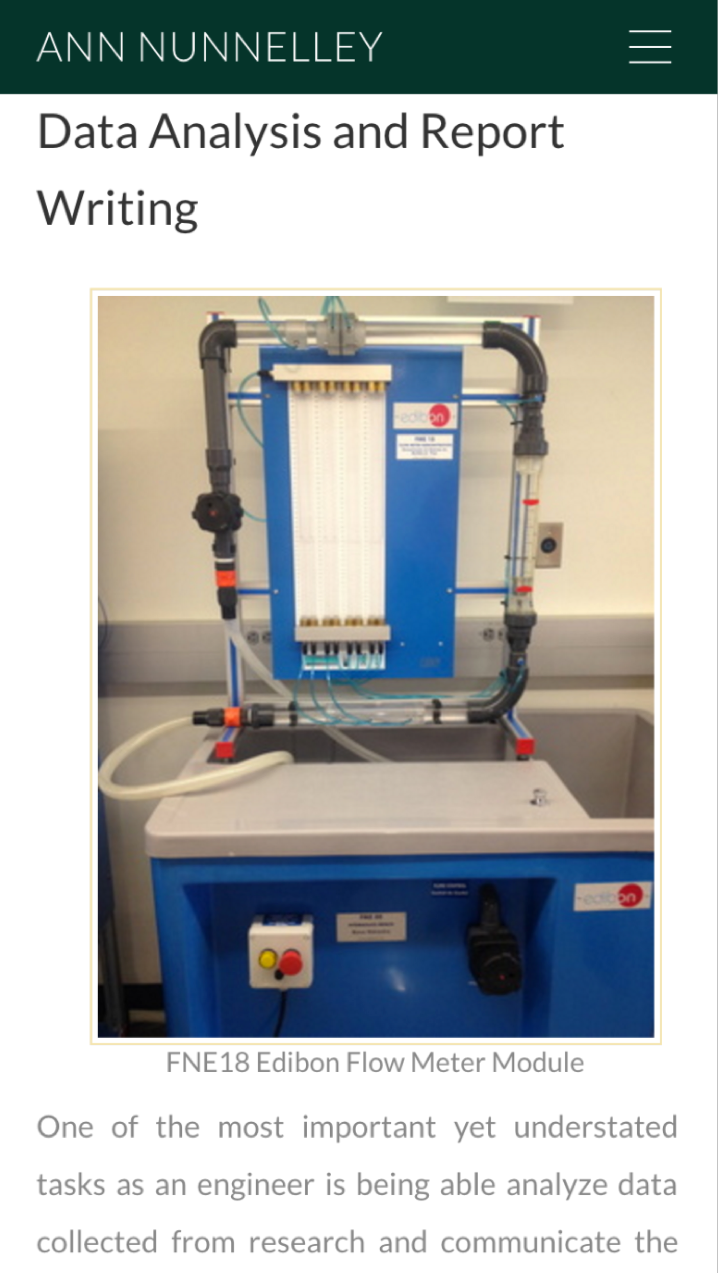
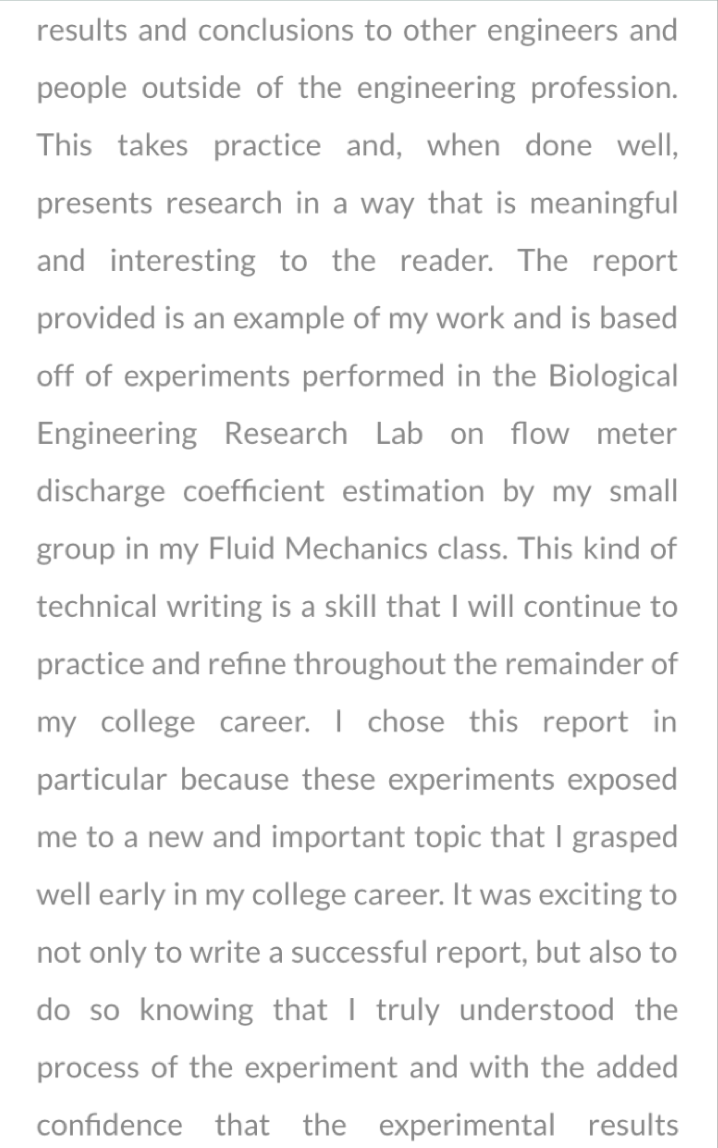
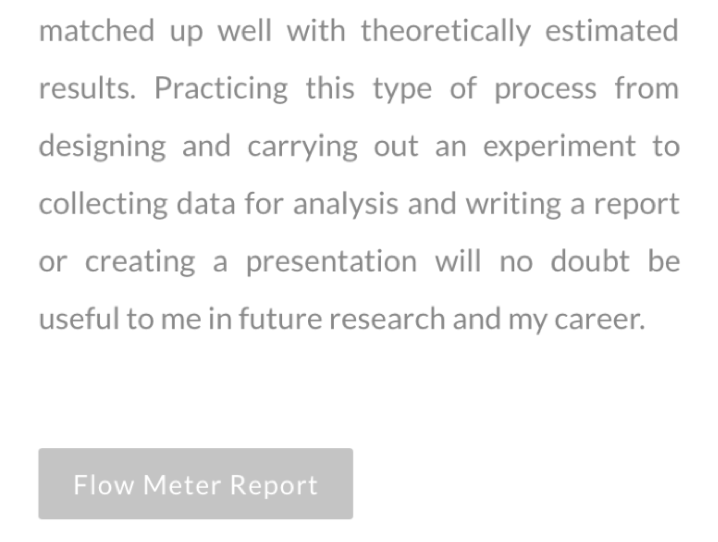
Professor Oladiran Fasina shares that, from a faculty perspective, one of the most surprising outcomes of integrating ePortfolios into the Biosystems Engineering curriculum has been how it has facilitated a personal connection in his own classes. At the beginning of each semester, he reviews the student ePortfolios that were created the previous semester. This gives him a much richer sense of who the students in his class are and why they chose to study biosystems engineering. He is able to relate students’ interests and experiences to what they are learning in the class by using specific examples he gathers from their ePortfolios.
Professor Fasina also notes that, prior to starting their ePortfolios, students have often not taken time to think through why they’re doing what they’re doing; most of them haven’t spent time reflecting on why they chose to study biosystems engineering and how that choice relates to their other interests, commitments, and values. The ePortfolio is a way for them to match their personal interests with their professional choices. Professor Fasina observes that students often discover that where they work and volunteer is connected to why they’re interested in biosystems engineering. The ePortfolio invites students to discover these connections and articulate them clearly. Professor Fasina's ePortfolio assignment explicitly invites students to make these connections.
Reflective practice is the key element of ePortfolio implementation in Biosystems Engineering. In their article, “Incorporating ePortfolios into Student Learning,” which appeared in a disciplinary magazine published by the American Society of Agricultural and Biological Engineers, Auburn faculty members Fasina, Srivastava, Dougherty, Adhikari, McDonald, Taylor, and Marshall write,
Personal reflection is the hardest part of developing an effective ePortfolio because it requires that students: Connect concepts from different courses and make connections between courses and extracurricular activities; Integrate, synthesize, and organize ideas from various sources; Think about and articulate significant experiences, both in and out of the classroom; Ask critical questions about their professional goals, progress toward these goals, and if need be develop new goals. This personal reflection is also the most important part of developing an effective ePortfolio because it improves the students’ critical thinking, which is a useful skill for lifelong learning in any field. (2015, 10-11)
They go on to write, “The engineering programs at Virginia Tech, Montana State, Clemson, and the University of Texas-Austin, among others, have already introduced ePortfolios as part of the student learning experience. However, there is still a lack of sustained adoption of ePortfolios in these engineering programs, partly because ePortfolios have mostly been used for assessing program outcomes" (2015, 11).
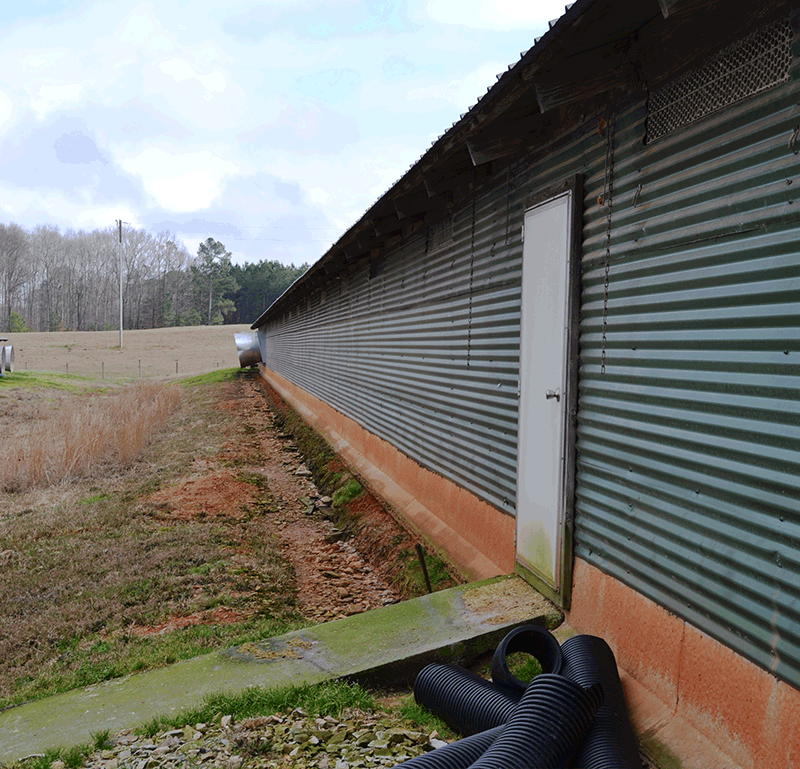 The flexibility of the ePortfolio Project also makes possible context-specific spinoff assignments. For example, in addition to their individual ePortfolios, Biosystems Engineering students create a collaborative ePortfolio in their senior design course that shows how small teams worked together to solve a real-world problem. In these collaborative ePortfolios, students can upload reports, photos, videos, and even gifs to showcase their processes and results.
The flexibility of the ePortfolio Project also makes possible context-specific spinoff assignments. For example, in addition to their individual ePortfolios, Biosystems Engineering students create a collaborative ePortfolio in their senior design course that shows how small teams worked together to solve a real-world problem. In these collaborative ePortfolios, students can upload reports, photos, videos, and even gifs to showcase their processes and results.  Students may then link to the collaborative senior design ePortfolio from their individual ePortfolio (and vice versa) and write reflectively about their role in the senior design project.
Students may then link to the collaborative senior design ePortfolio from their individual ePortfolio (and vice versa) and write reflectively about their role in the senior design project.